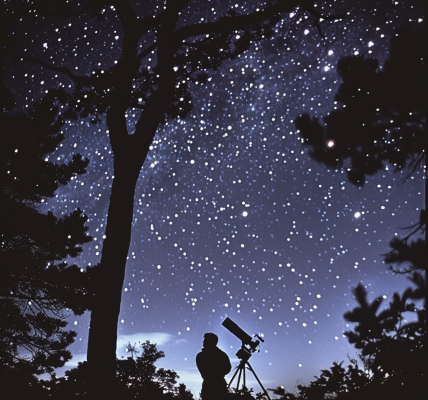A groundbreaking discovery in the field of astronomy has unveiled a stellar-mass black hole residing in a peculiar binary system known as G3425, located approximately 5,800 light-years away from Earth. This remarkable find has sparked excitement among scientists as it appears to be a “missing link” black hole, bridging the gap between smaller and larger black holes.
The binary system is characterized by its visible component, a red giant star. Red giants are fascinating stellar bodies that emerge when a star exhausts its hydrogen fuel and ceases nuclear fusion in its core. As a result, the outer layers of the star expand significantly, sometimes reaching widths up to 100 times greater than their original size. Our own sun is currently in its middle age and is projected to enter a similar red giant phase in approximately 5 billion years, expanding to engulf the inner planets, including Earth. However, unlike the sun, the red giant in G3425 has a stellar-mass black hole as a companion.
The red giant star in G3425 has a mass estimated to be around 2.7 times that of our sun. The true intrigue lies in the mass of its dark companion, the newly discovered black hole. A research team led by Wang Song from the National Astronomical Observatories of the Chinese Academy of Sciences (NAOC) has determined that this black hole has a mass ranging between 3.1 and 4.4 solar masses, with a probable mass of approximately 3.6 solar masses.
Wang Song emphasized the significance of this discovery, stating, “The black hole falls within the famous mass gap, making it one of the lightest black holes discovered so far. This discovery not only confirms the existence of mass-gap black holes but also shows that binaries containing low-mass black holes can survive a supernova explosion.” The mass gap refers to a range of black hole masses that have been difficult to explain with current astrophysical theories.
The detection of this stellar-mass black hole was made possible through a combination of data from the Large Sky Area Multi-Object Fiber Spectroscopic Telescope (LAMOST) and the Gaia space telescope. LAMOST is known for its capability to capture extensive spectroscopic data, while Gaia specializes in precisely measuring the positions of billions of stars within our galaxy and beyond. This collaborative approach enabled researchers to observe the unique characteristics of the black hole and its companion star.
The implications of this discovery are profound, as it challenges existing theories regarding the formation and evolution of black holes. Traditionally, black holes are categorized into two main groups: stellar-mass black holes, formed from the remnants of massive stars, and supermassive black holes, which reside at the centers of galaxies and have masses millions to billions of times that of the sun. The existence of black holes within the mass gap raises questions about the processes that lead to their formation and the conditions necessary for their survival in binary systems.
As astronomers continue to explore the mysteries of the universe, findings like that of G3425 shed light on the dynamic interactions between stars and their companions. The ongoing research in this field not only enhances our understanding of black holes but also contributes to the broader knowledge of stellar evolution and the life cycles of stars.
The research detailing these findings has been published in the esteemed journal Nature Astronomy, further solidifying its significance within the scientific community. As more data becomes available and new technologies emerge, the quest to uncover the secrets of black holes and their role in the cosmos will undoubtedly continue to captivate astronomers and enthusiasts alike.
In addition to the scientific implications, the discovery of the black hole in G3425 serves as a reminder of the vastness and complexity of the universe. Each new finding propels humanity’s understanding of celestial phenomena, urging scientists to delve deeper into the fabric of space and time.
The excitement surrounding this discovery is palpable, as it opens new avenues for research and exploration. Astronomers are eager to investigate further, utilizing advanced telescopes and observational techniques to gather more data about G3425 and its enigmatic components. The potential for uncovering additional secrets within this binary system is immense, and the scientific community remains on the edge of their seats as they await future revelations.
As the exploration of black holes continues, the implications of such discoveries extend beyond mere academic interest. They challenge our understanding of fundamental physics and the nature of reality itself. The quest to comprehend these cosmic phenomena is a testament to humanity’s enduring curiosity and desire to unravel the mysteries of the universe.
In the coming years, as more discoveries like that of G3425 are made, the landscape of astrophysics will undoubtedly evolve. Each finding contributes to a more comprehensive understanding of the universe, inspiring future generations of scientists and explorers to push the boundaries of knowledge and discovery.





